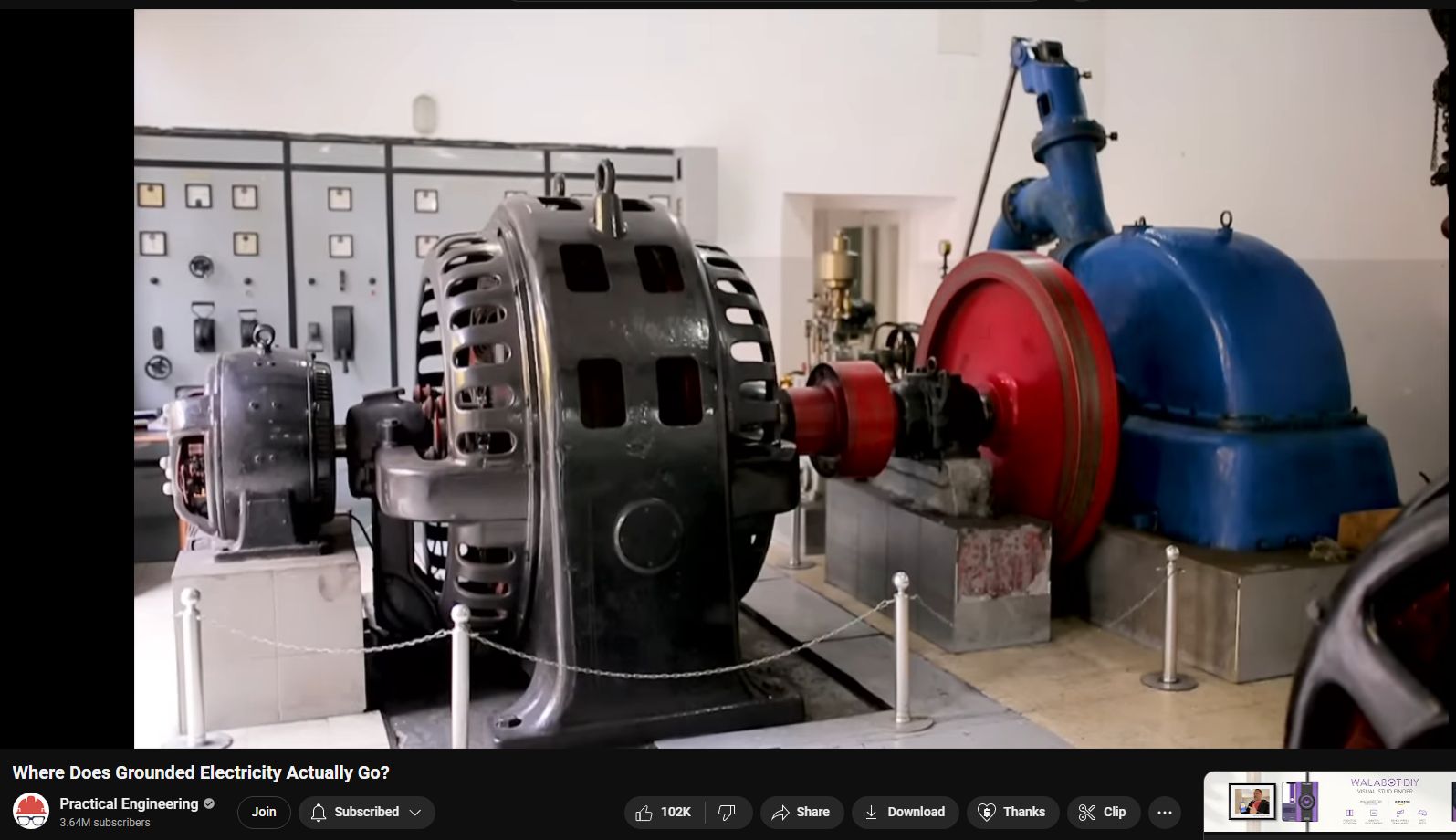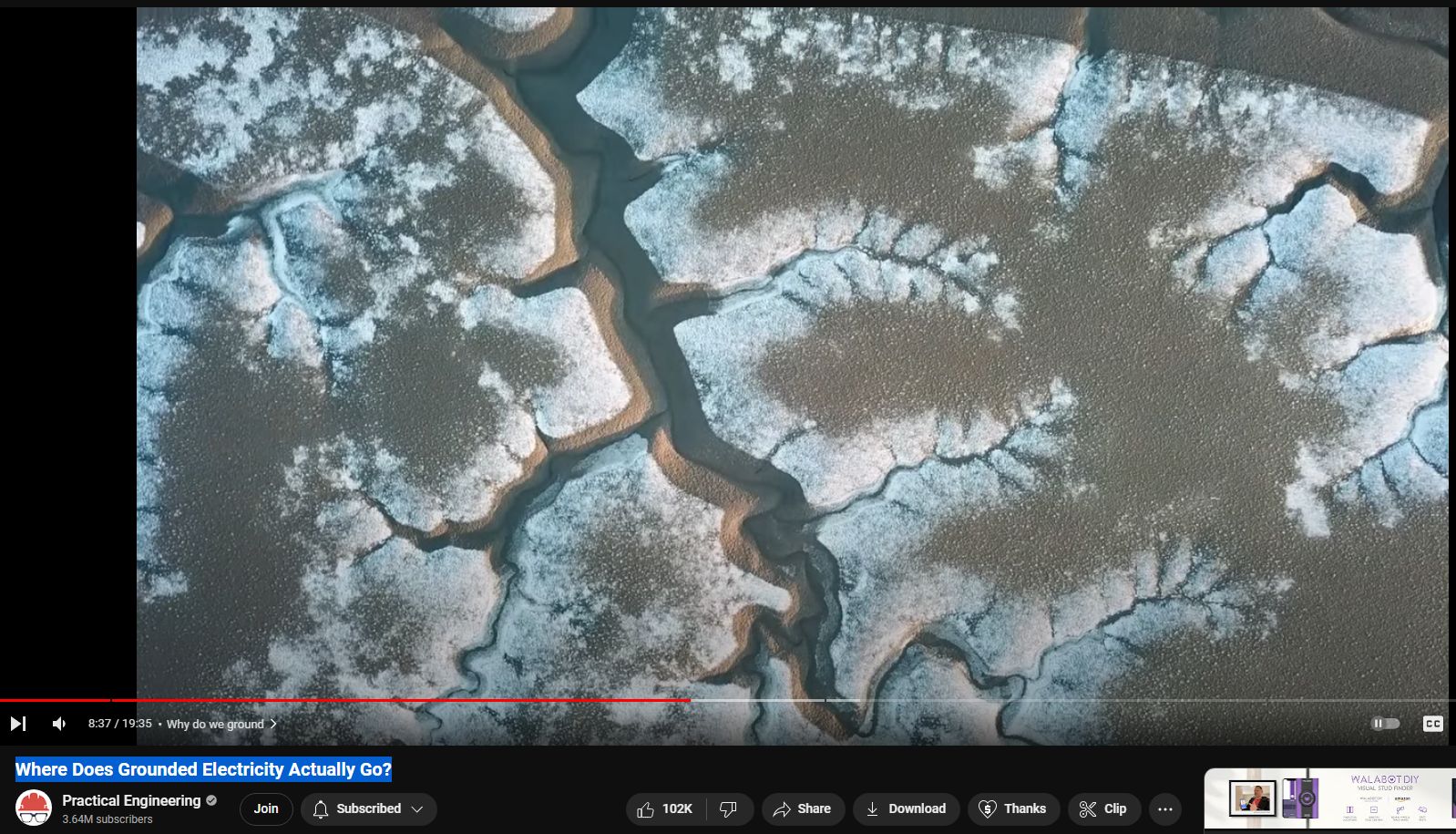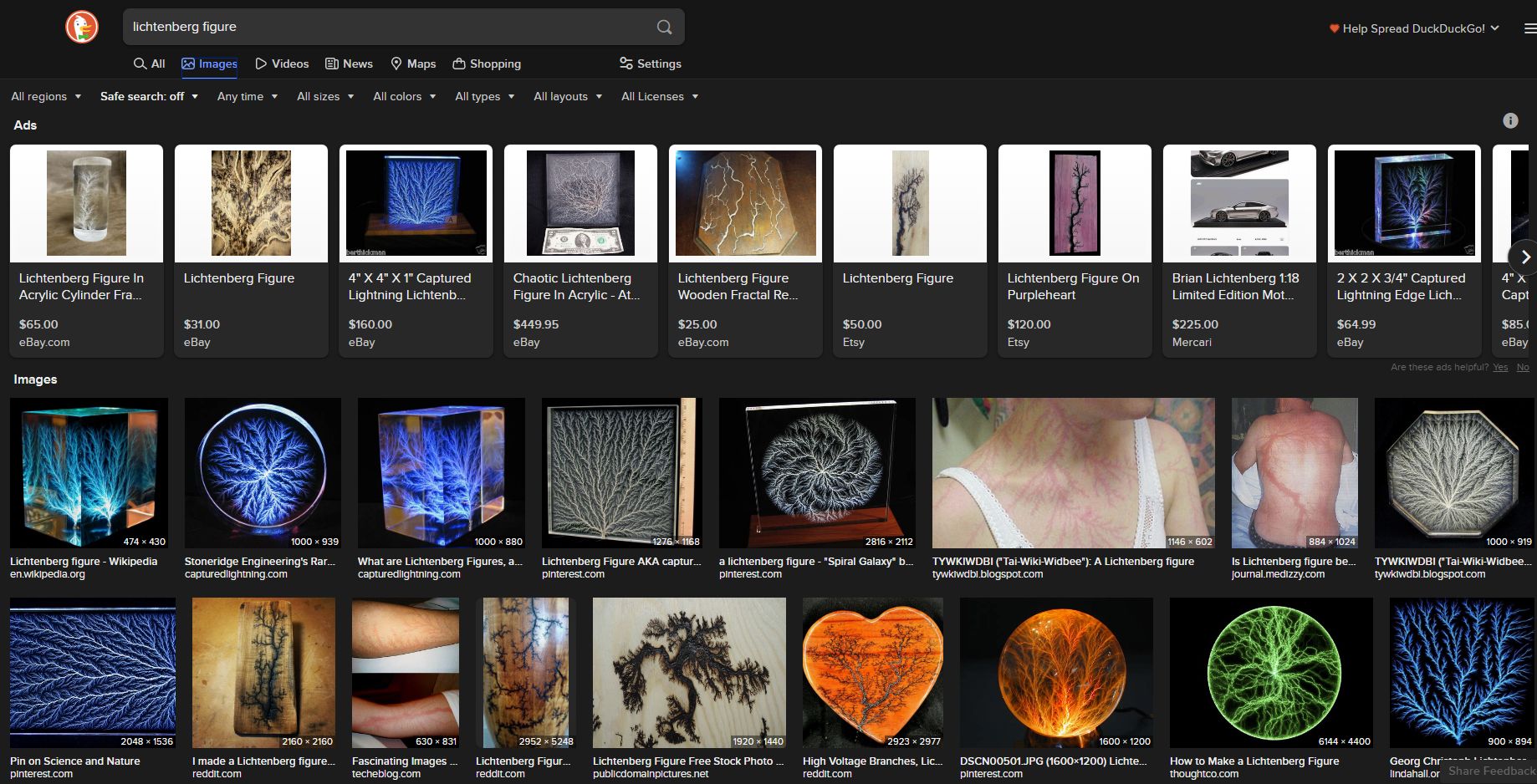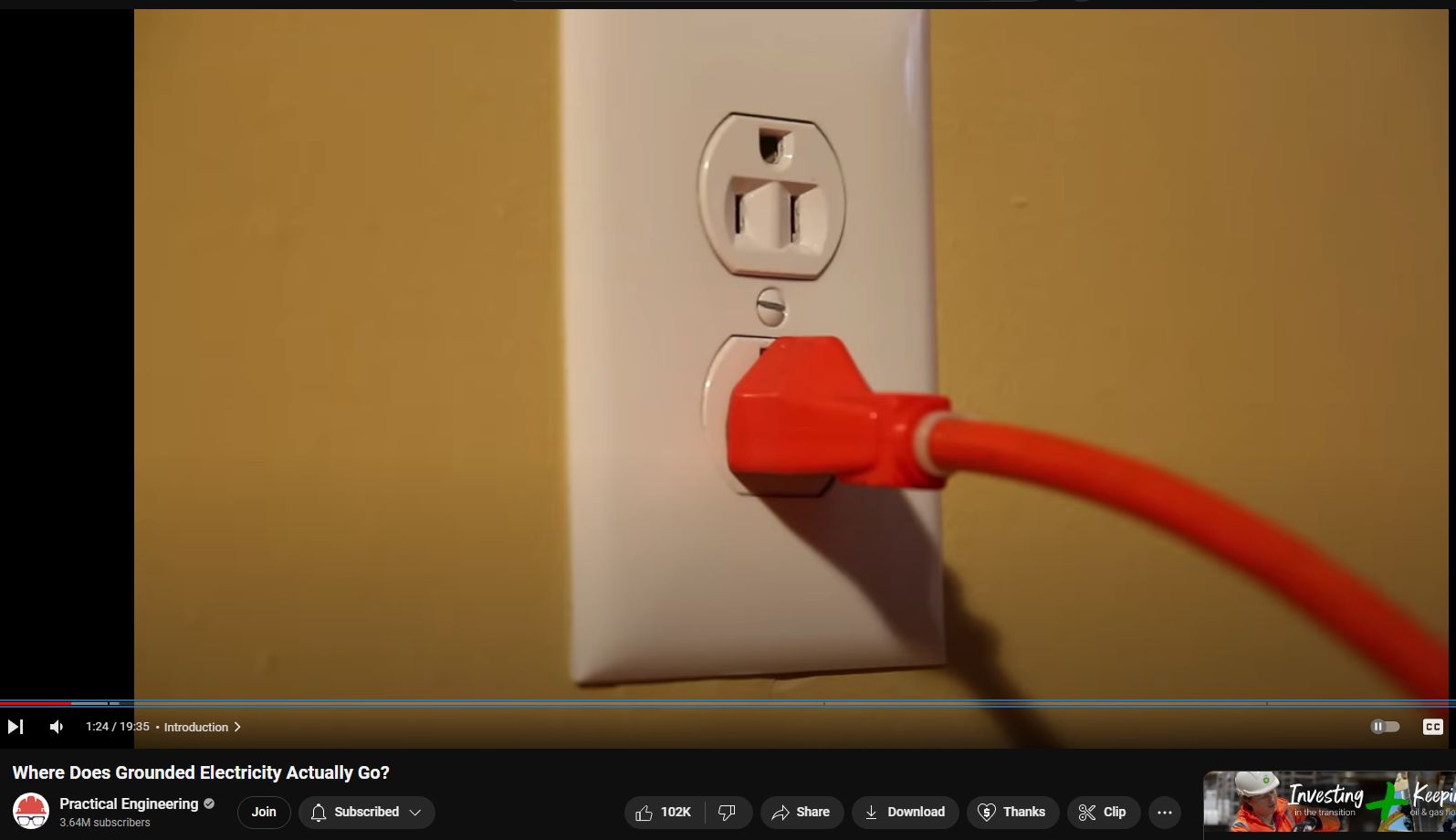Electrical Grounding and the Power Grid
“The ground is really just another wire…although not a great one.” ~ 7:50 in
Current doesn’t flow to the ground; it flows through the ground and back up. If there is electricity moving into the ground from an energized conductor, go back to the source of that conductor and see what’s happening. For the grid, it’s probably a transformer or electrical generator, in either case, a simple coil of wire. And, the electrical current flowing out of the coil has to be equal to the electrical current flowing into it, whether that current is coming from one of the other phases, a neutral line, or an electrode buried in the ground.


Lichtenberg figures indicate long-ago electrical currents on a massive scale.





Grounding, Earthing, Return, Power Grid
Electrical grounding in the context of the power grid is a fundamental concept that ensures safety, system stability, and proper operation of electrical networks. Grounding, or earthing, refers to the process of connecting the electrical system to the ground (Earth) to prevent unwanted voltages from presenting a hazard to people and equipment.
Purpose of Grounding in the Power Grid
– Safety: Grounding protects people from electric shock by providing a path for fault currents to flow directly to the earth, significantly reducing the risk of electrocution from equipment that has become energized due to insulation failure or other issues.
– Equipment Protection: It protects electrical devices and infrastructure from damage caused by lightning strikes, voltage surges, and other electrical anomalies. By providing a path to ground, excess electricity can be safely diverted away from sensitive components.
– Voltage Stabilization: Grounding helps to stabilize the voltage levels in the power system, ensuring that circuit protection devices operate correctly and that the system functions efficiently.
How Grounding Works
In a grounded system, a connection is made between the electrical system and the ground. This is typically achieved by driving a grounding rod into the earth and connecting it to the system’s neutral point, the body of electrical equipment, or both. In power distribution systems, substations and power lines are grounded to ensure that the entire grid operates safely and effectively.
Types of Grounding in the Power Grid
– System Grounding: Involves the connection of the neutral point of a transformer, generator, or other equipment to the ground. System grounding is critical for controlling voltages with respect to the earth during normal and fault conditions.
– Equipment Grounding: Ensures that the non-current carrying parts of equipment (like the metal enclosures) are connected to the ground. This type of grounding protects against electric shock hazards by ensuring that these parts do not become energized due to insulation failure or other electrical faults.
Challenges and Considerations
– Ground Potential Rise (GPR): During faults, the flow of fault current to the ground can cause a rise in the ground potential near the grounding point, posing a risk of electric shock. Proper grounding system design is crucial to minimize GPR and its hazards.
– Corrosion: Grounding components buried in the earth are susceptible to corrosion, which can reduce their effectiveness over time. Materials and coatings resistant to corrosion are often used to mitigate this issue.
– Soil Resistivity: The effectiveness of a grounding system is highly dependent on the resistivity of the soil, which can vary significantly with moisture, temperature, and composition. Grounding system design must consider local soil conditions to ensure adequate performance.
Regulatory and Standards Compliance
Electrical grounding practices are governed by various national and international standards, including those set by the National Electrical Code (NEC) in the United States, the International Electrotechnical Commission (IEC), and others. Compliance with these standards is essential for ensuring the safety and reliability of the power grid.
In summary, electrical grounding is a critical component of the power grid, essential for safety, equipment protection, and system stability. Proper design, implementation, and maintenance of grounding systems are vital for the effective operation of electrical networks.

From the comments —
“The large submerged electrode array field in the Pacific Ocean near San Fran is at a place called BOLINAS which was not coincidentally the same location as major RCA transmitting station there in decades past. ERIC DOLLARD goes into this history and technology in extreme detail, WIRELESS GIANT OF THE PACIFIC and other talks.”
“There is an “ancient-world”, rust-free iron pillar in India. Why is not this magical metallurgy decoded and being used on all power-grid pylons / towers ? …and everywhere else?”
“Look into ERIC DOLLARD re TESLA energies, conduction, power transmission, etc.”
“HUTCHISON EFFECT requires high-voltage gradient to empower the otherworldly effects being recreated in the lab and apparently in real-life — Interesting thing about the super-secret Class-3 Monster Hurriance Erin, barreling down at NYC for weeks, then sitting still just 200 miles off the coast (all 3 NYC area airports noted distant thunder) during the attack, then moving off eastward. US Navy paid special attention with in-eye flights and measurements, etc. One theory holds that HAARP from Ascension Island was responsible for its inception and guidance. Erin is said to have powered the otherworld reactions that fateful day in NYC. Curious that the most recent fateful day in Lahaina, near neighbor to the USAF energy weapons dev lab, also involved another hurricane so interesting that its NOAA weather data has been tampered with.”
14:50 — “Electricity takes all the paths it can, in accordance with their relative conductivity.”